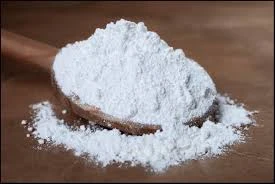
formic acid methanoic acid
The Importance and Applications of Formic Acid (Methanoic Acid)
Formic acid, also known as methanoic acid, is the simplest carboxylic acid, with the chemical formula HCOOH. It is a colorless, pungent liquid that is highly soluble in water and has a variety of practical applications across multiple industries. Understanding its properties, production methods, and uses sheds light on its significance in both industrial and everyday contexts.
Chemical Properties and Structure
Formic acid is characterized by its simple structure, consisting of a carbon atom double-bonded to an oxygen atom and single-bonded to a hydroxyl group (–OH). This makes formic acid not only a weak organic acid but also a highly reactive compound. With a pKa value of about 3.75, it can easily donate protons, making it a useful acid for various reactions. Its low molecular weight also contributes to its volatility and distinctive odor, which is reminiscent of that of ants—hence its name.
Production Methods
Formic acid is produced through several methods. One common industrial process is the hydration of carbon monoxide in the presence of sodium hydroxide. This method can yield high purity formic acid. Additionally, it can be derived from natural sources, as it is found in the stings of ants and certain plants. A notable natural occurrence is its presence in the secretions of some insects, notably the red wood ant. Furthermore, formic acid can also be produced by the fermentation of biomass, presenting a more sustainable production pathway.
Applications in Industry
formic acid methanoic acid

The applications of formic acid are diverse, spanning various sectors. One of its primary uses is in the textile industry, where it serves as a dyeing and finishing agent. Its ability to lower the pH and help in the fixation of dyes makes it invaluable in producing vibrant and long-lasting colors in fabrics.
In the leather industry, formic acid plays a crucial role in the tanning process. It aids in the preservation of hides and enhances the quality of leather products. Additionally, it is used in the formulation of leather finishes, ensuring durability and resistance to environmental factors.
Another significant application of formic acid is in agriculture, where it acts as a preservative in animal feeds and silage. Its antimicrobial properties help prevent spoilage and enhance the nutritional value of feed. Formic acid is also effective in controlling pests and contributing to sustainable farming practices.
Moreover, formic acid has promising applications in renewable energy technologies. It is being studied as a potential hydrogen carrier in fuel cells, offering a safe and efficient way to store and transport hydrogen. The conversion of formic acid back into hydrogen gas is a process that could lead to advancements in clean energy solutions.
Environmental Implications and Safety
While formic acid has beneficial applications, it is essential to recognize its potential environmental implications. As with many chemicals, proper handling and disposal are critical to minimize negative impacts. Formic acid can be irritating to the skin, eyes, and respiratory system; thus, adequate safety measures should be implemented during its use.
In conclusion, formic acid, or methanoic acid, is a vital compound with a wide range of industrial applications. Its role in textile manufacturing, leather production, agriculture, and potential in renewable energy systems highlights its versatility and importance. As industries evolve towards more sustainable practices, the ongoing research and development surrounding formic acid promise to enhance its applications while addressing environmental considerations. Through responsible usage and innovation, formic acid will continue to contribute to various fields, marking its significance in modern science and industry.
-
Pure Sodium Dichloroisocyanurate Dihydrate | Powerful DisinfectantNewsAug.29,2025
-
Industrial Chemicals: Quality & Purity for Every IndustryNewsAug.28,2025
-
Nitrile Rubber Honoring Strict Production StandardsNewsAug.22,2025
-
Aspartame Ingredients Honoring Food Safety ValuesNewsAug.22,2025
-
Fertilizer for Balanced Plant NutritionNewsAug.22,2025
-
Cyanide Gold Processing with High Purity AdditivesNewsAug.22,2025
-
Formic Acid in Textile Dyeing ApplicationsNewsAug.22,2025
Hebei Tenger Chemical Technology Co., Ltd. focuses on the chemical industry and is committed to the export service of chemical raw materials.
-

view more DiethanolisopropanolamineIn the ever-growing field of chemical solutions, diethanolisopropanolamine (DEIPA) stands out as a versatile and important compound. Due to its unique chemical structure and properties, DEIPA is of interest to various industries including construction, personal care, and agriculture. -

view more TriisopropanolamineTriisopropanolamine (TIPA) alkanol amine substance, is a kind of alcohol amine compound with amino and alcohol hydroxyl, and because of its molecules contains both amino and hydroxyl. -

view more Tetramethyl Thiuram DisulfideTetramethyl thiuram disulfide, also known as TMTD, is a white to light-yellow powder with a distinct sulfur-like odor. It is soluble in organic solvents such as benzene, acetone, and ethyl acetate, making it highly versatile for use in different formulations. TMTD is known for its excellent vulcanization acceleration properties, which makes it a key ingredient in the production of rubber products. Additionally, it acts as an effective fungicide and bactericide, making it valuable in agricultural applications. Its high purity and stability ensure consistent performance, making it a preferred choice for manufacturers across various industries.





